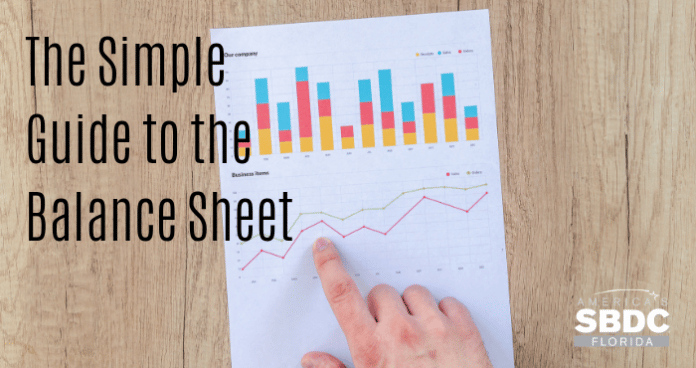by Bill Burnham,
Business Consultant, Florida SBDC at the University of South Florida
Though many business owners are aware of and can navigate through a profit and loss statement or an income statement, there are still many who do not have the same level of knowledge when it comes to the balance sheet. They may not understand what it is or why it is important.
Analyzing the balance sheet can communicate many things about a company, including how liquid a company is, how risky it may be, how cash flows through it and how efficient the company is. The concept of the balance sheet is fairly simple. It shows the dollar value of a company’s assets, liabilities and owner’s equity.
For example, if a company uses assets to produce income and has to pay for these assets by either borrowing money (which then creates a liability) or by getting money from investors (which establishes equity), the balance sheet keeps a record of this activity.
The balance sheet illustrates what a company owns (assets), what it owes (liabilities) and how much owners and shareholders have invested (equity). By subtracting liabilities from assets, a business owner can determine the company’s net worth at any given point in time.
Equivalently, the same calculation could be used to determine how much equity is in a home (home’s value – what is owed = equity). The values listed on the balance sheet are representative of a specific point in time, which could be the end of a month, quarter or year.
Unlike the income statement, which starts fresh at the beginning of each accounting period, the balance sheet is a historical document that contains the entire history of the company. It’s important to note that while many business transactions show up on the company’s income statement, all of its transactions will be represented on the balance sheet.
The structure of a balance sheet is straightforward and contains only three sections – assets, liabilities, and equity. It is based on a simple mathematical premise that assets equal liabilities plus equity. A balance sheet always has to balance—hence the name.
Assets – Organized from top to bottom, assets are based on how quickly they can be converted into cash. This is called “liquidity.” The most “liquid” assets are at the top of the list and the least liquid are at the bottom of the list.
Liabilities – Like assets, liabilities are listed by how quickly business needs to pay them off. Current liabilities are due within one year. Long-term liabilities are due at any point after one year.
Equity – Accounts are generally listed in the order that makes the most sense to the business owner.
Once business owners have a better understanding of balance sheets, they understand how simple and useful it can be for the company. If financial statements are not your thing, feel free to reach out to any one of the local resources in your area, such as the professionally credentialed business consultants at the Florida SBDC at USF.
Bill Burnham is a business consultant with the Florida SBDC at the University of South Florida. His office is located at the Greater Hernando Chamber of Commerce.

